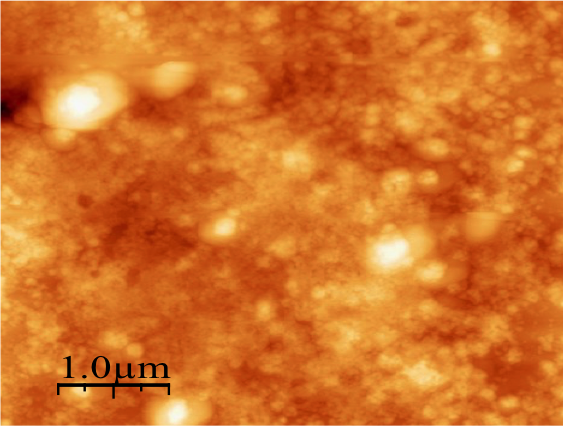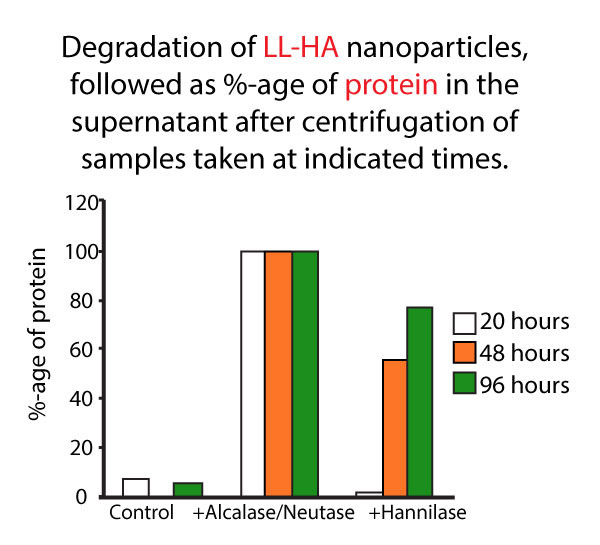LACTOACTIVE® the art of science
Colostrum (known colloquially as beestings, beginnings or first milk) is a form of milk produced by the mammary glands of mammals (including humans) in late pregnancy. Most species will generate colostrum just before calving. Colostrum contains antibodies to protect the newborn against disease.
In general, the protein concentration in colostrum is substantially higher than in milk. As is the milk that is subsequently produced, colostrum is important for the nutrition, growth, and development of newborn infants and contributes to the immunologic defense of neonates. Colostrum varies in quality and quantity. In the Dairy Industry, the quality of colostrum is measured as the amount of IgG (Immunoglobulin G) per liter. It is recommended that newborn calves receive at least 4 quarts (liters) of colostrum with each containing at least 50 grams of IgG/liter. Testing of colostrum quality can be done by a multitude of devices including colorimeter, optical refractometer or digital refractometer. Newborns have very immature and large digestive systems, and colostrum delivers its nutrients in a very concentrated low-volume form. It has a mild laxative effect, encouraging the passing of the baby’s first stool, which is called meconium. This clears excess bilirubin, a waste product of dead red blood cells, which is produced in large quantities at birth due to blood volume reduction from the infant’s body and helps prevent jaundice.
Colostrum is known to contain immune cells (as lymphocytes) and many antibodies such as IgA, IgG, and IgM. These are some of the components of the adaptive immune system. In preterm infants, some IgA may be absorbed through the intestinal epithelium and enter the blood stream though there is a very little uptake in full term babies.
This is due to the early “closure” of the intestinal epithelium to large molecule uptake in humans unlike the case in cattle which continue to uptake immunoglobulin from milk shortly after birth. Other immune components of colostrum include the major components of the innate immune system, such as lactoferrin, lysozyme, lactoperoxidase, complement, and prolinerich polypeptides (PRP). Several cytokines (small messenger peptides that control the functioning of the immune system) are found in colostrums as well, including interleukins, tumor necrosis factor, chemokines, and others.
Colostrum also contains some growth factors, such as insulin-like growth factors I (IGF-1), and II, transforming growth factors alpha, beta 1 and beta 2, fibroblast growth factors, epidermal growth factor, granulocyte-macrophage stimulating growth factor, platelet-derived growth factor, vascular endothelial growth factor, and colony stimulating factor-1.
Colostrum is very rich in proteins, vitamin A, and sodium chloride, but contains lower amounts of carbohydrates, lipids, and potassium than mature milk. The most pertinent bioactive components in colostrum are growth factors and antimicrobial factors. The antibodies in colostrum provide passive immunity, while growth factors stimulate the development of the gut. They are passed to the neonate and provide the first protection against pathogens.
In human and animal cells, colostrum proteins have shown to interact with cell-surface receptors and influence processes such as morphogenesis, wound repair, and anti-inflammatory processes. But these factors can be limited due to the poor mechanical properties, rapid degradation and in vivo clearance when bovine colostrum is used. Bovine colostrum from pasture-fed cows contains immunoglobulins specific to many human pathogens, including Escherichia coli, Cryptosporidium parvum, Shigella Flexner, Salmonella species, Staphylococcus species, and rotavirus (which causes diarrhea in infants). Before the development of antibiotics, colostrum was the main source of immunoglobulins used to fight infections. In fact, when Albert Sabin made his first oral vaccine against polio, the immunoglobulin he used came from Bovine Colostrum.
Hyaluronic Acid
Hyaluronic acid is one of the natural polymers belonging to the sulfated glycosaminoglycans class and represents the main component of the dermis extracellular matrix. Besides having important mechanical and structural functions, it plays a key role in the healing process. It induces fibroblast proliferation and stimulates their metabolism during the granulation phase of the healing process, with a subsequent increase in collagenous fibers.
Hyaluronic acid, also called hyaluronan, is an anionic, nonsulfated glycosaminoglycan distributed widely throughout connective, epithelial, and neural tissues. It is unique among glycosaminoglycans in that it is nonsulfated, forms in the plasma membrane instead of the Golgi apparatus, and can be very large, with its molecular weight often reaching the millions. One of the chief components of the extracellular matrix, hyaluronan contributes significantly to cell proliferation and migration, and may also be involved in the progression of some malignant tumors.
The average 70 kg (154 lb.) person has roughly 15 grams of hyaluron an in the body, one-third of which is turned over (degraded and synthesized) every day. Hyaluronic acid is a polymer of disaccharides, themselves composed of D-glucuronic acid and N-acetyl-D-glucosamine, linked via alternating β-(1→4) and β-(1→3) glyosidic bonds.
Hyaluronic acid can be 25,000 disaccharide repeats in length. Polymers of hyaluronic acid can range in size from 5,000 to 20,000,000 Da in vivo. The average molecular weight of the human synovial fluid is 3–4 million Da, and hyaluronic acid purified from the human umbilical cord is 3,140,000 Da. Hyaluronic acid also contains Silicon, ranging between 350μg/g to 1900μg/g depending on location in the organism. Hyaluronic acid is energetically stable, in part because of the stereochemistry of its component disaccharides. Bulky groups on each sugar molecule are in sterically favored positions, whereas the smaller hydrogens assume the less-favorable axial positions. In humans, there are at least seven types of hyaluronidase-like enzymes, several of which are tumor suppressors. The degradation products of hyaluronan, the oligosaccharides, and very low-molecular-weight hyaluronan exhibit pro-angiogenic properties. Also, recent studies showed hyaluronan fragments, not the native high molecular weight molecule, can induce inflammatory responses in macrophages and dendritic cells in tissue injury and in skin transplant.
Nanoparticles
Nanoparticles are particles between 1 and 100 nanometers in size. In nanotechnology, a particle is defined as a small object that behaves as a whole unit with respect to its transport and properties. Nanoparticles can be linked to biological molecules that can act as address tags, to direct the nanoparticles to specific sites within the body, specific organelles within the cell.
Our nanoparticle composition has a diameter in the range of 10 nm-300 nm. There are several methods for creating nanoparticles, including attrition, pyrolysis, and hydrothermal synthesis. In the case of the colloid, the volume fraction of particles (or particle density) may be so low that a significant amount of fluid may need to be removed initially for the gel-like properties to be recognized. This can be accomplished in several ways. The simplest method is to allow time for sedimentation to occur, and then pour off the remaining liquid. Centrifugation can also be used to accelerate the process of phase separation.
Nanomedicine is the medical application of nanotechnology. Nanomedicine ranges from the medical applications of nanomaterials and biological devices to nanoelectronic biosensors and even possible future applications of molecular nanotechnology such as biological machines. Current problems for nanomedicine involve understanding the issues related to toxicity and environmental impact of nanoscale materials (materials whose structure is on the scale of nanometers, i.e. billionths of a meter).
The overall drug consumption and side-effects may be lowered significantly by depositing the active agent in the morbid region only and in no higher dose than needed. Targeted drug delivery is intended to reduce the side effects of drugs with concomitant decreases in consumption and treatment expenses.
Drug delivery focuses on maximizing bioavailability both at specific places in the body and over a period of time. This can potentially be achieved by molecular targeting by none engineered devices. More than $65 billion are wasted each year due to poor bioavailability.
The active substances of BC in Lactoactive® are extracted and refined into particles that are so small that they penetrate the skin, beneficial as mutations often occur in the tissue.
The particles have an anti-inflammatory effect capable of combating inflammation-related diseases. The particles also showed a simultaneous immunostimulatory effect. The cream retains its effect sufficiently after application for therapeutic effect to be achieved. By amplifying such effects, we make it possible for the ingredients to join forces with the body’s immune system.
Lactoactive® which is a refined processing of colostrum combined with hyaluronic acid.
During the process, the ingredients achieve a much better effect than previously seen. In fact, the yield of protein content is as high as 82% compared to the normal 50-60%. Proteins in Vilact® survive longer without being degraded by enzymes, enabling them to work longer in the skin. The active substances are more resistant to degradation and are therefore able to work effectively. In other words, the active substances operate longer time in the skin than ever experienced before.
Lactoactive®
The active substances of BC in Lactoactive® are extracted and refined into particles that are so small that they penetrate the skin, beneficial as mutations often occur the tissue. The particles have an anti-inflammatory effect capable of combating inflammation-related diseases.
The particles also showed a simultaneous immunostimulatory effect. The cream retains its effect sufficiently after application for therapeutic effect to be achieved. By amplifying such effects, we make it possible for the ingredients to join forces with the body’s immune system.
Lactoactive® which is a refined processing of colostrum combined with hyaluronic acid. During the process, the ingredients achieve a much better effect than previously seen. In fact, the yield of protein content is as high as 82% compared to the normal 50-60%. Proteins in Vilact® survive longer without being degraded by enzymes, enabling them to work longer in the skin. The active substances are more resistant to degradation and are therefore able to work effectively.
A Nanoparticle Composition


Treasure facts collected in Lactoactive® nanoparticle
Greater protein cross-linking efficiency of colostrum incorporating hyaluronic acid
Greater amount of protein captured in the nanoparticles with hyaluronic acid and low lactose colostrum reaches up to 82 % (compared to between 50-60 % using the original protocol)
Decrease in 50% quantity of volume buffer relative to the original protocol
Great amount of hyaluronic acid was bound to the low lactose colostrum’s (LLC) nanoparticles (67%)
The particles containing HA are quite resistant to the protease Hannilase digestion for over 20 hrs
Incorporation of Hyaluronic Acid & Stabilized Colostrum Proteins
Hyaluronic acid is one of the natural polymers belonging to the sulfated glycosaminoglycans class and represents the main component of the dermis extracellular matrix. Besides having important mechanical and structural functions, it plays a key role in the healing process. It induces fibroblast proliferation and stimulates their metabolism during the granulation phase of the healing process, with a subsequent increase in collagenous fibers.
As our cream deals with inflammatory skin diseases and their alleviation, incorporation of hyaluronic acid in the nanoparticles to increase the efficacy of the cream was studied.
The nanoparticles made with and without hyaluronic acid were also subjected to proteolytic action by several proteases to find out their resistance to proteases and hence increased and longer lasting biological activity. On the other hand, it is important that at some length in time, the nanoparticles with or without hyaluronic acid are biodegradable and do not accumulate in the body.
